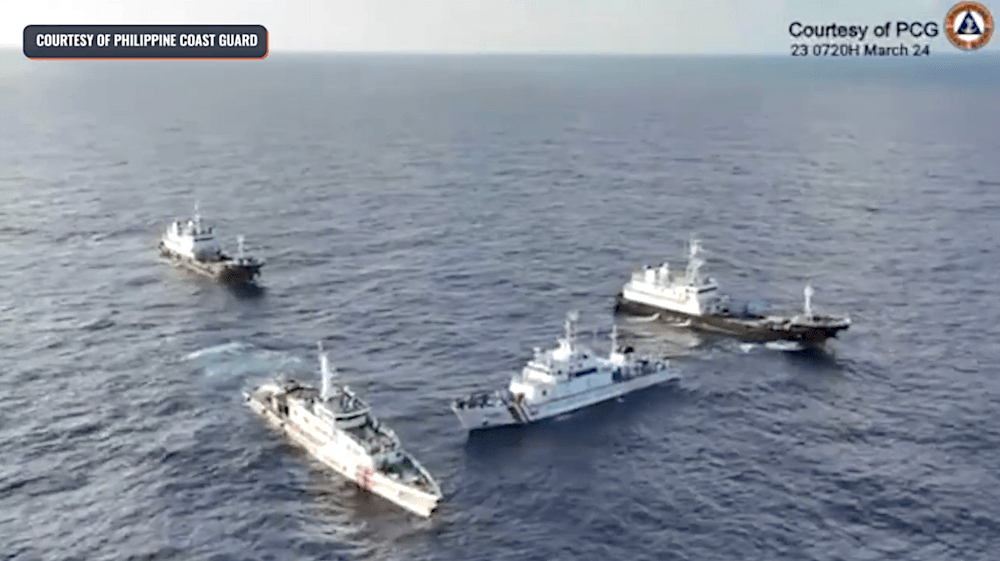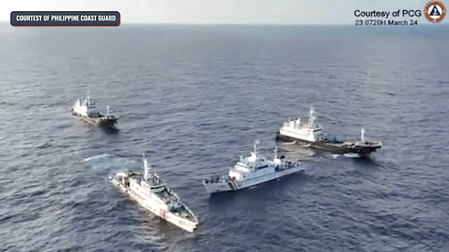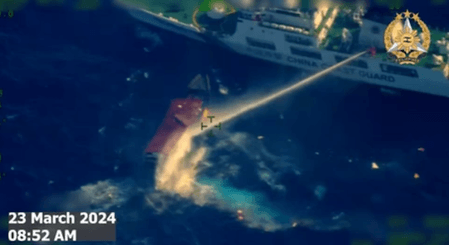SUMMARY
This is AI generated summarization, which may have errors. For context, always refer to the full article.

MANILA, Philippines – Journalist groups in the Philippines on Wednesday, March 27, criticized China’s foreign ministry and its embassy in Manila over claims that journalists who embed in the Philippines’ rotation and resupply missions to Ayungin Shoal “manipulate” their work to “project the Philippines as a victim.”
“The association strongly rejects and condemns the false, baseless claims by Foreign Ministry Spokesperson Hua Chunying and the Chinese Embassy in Manila that journalists ‘manipulate the videos they recorded’ in South China Sea to ‘project the Philippines as a victim,” said the Foreign Correspondents Association of the Philippines (FOCAP) in a statement.
The National Union of Journalists of the Philippines (NUJP), meanwhile, said in a separate statement that it “takes offense at the insinuation” first made by the China Foreign Ministry’s mouthpiece.
In a statement released late March 27, the Defense Press Corps of the Philippines (DPC) said it “takes exception to the baseless allegations of the Chinese Foreign Ministry which cast aspersions on the integrity of Filipino journalists covering the resupply missions of the Philippine Government within its own Exclusive Economic Zone.”
“The journalists who join these missions, risk their lives in the face of unwanted aggression to bring the unvarnished truth to light. It is unfortunate some would still call the work of these independent Filipino journalists as manipulated sensationalism. We reject and condemn this false accusation,” the independent group, composed of journalists assigned and accredited to cover the defense beat, said.
‘Troublemakers’
Hua, in a series of graphics, painted the Philippines and journalists who join resupply missions as “troublemakers.”
“Each time the Philippines delivered supplies to the grounded warship, they had many journalists on board, and had them manipulate the videos they recorded to make sensational news and project the Philippines as a victim,” said China’s foreign ministry spokesperson.
The Chinese embassy in Manila posted the same series of graphics on its social media accounts.
“FOCAP takes deep offense at the insinuation that the press is a ‘troublemaker’ and in cahoots with the government to forward a political agenda,” said the association, whose membership is voluntary and includes both Filipino and foreign nationals assigned to report on the Philippines.
It added: “The claim that the Philippines ‘had [journalists] manipulate’ their footage is a barefaced lie.”
“A free and independent press reports not what they are told, but what they observe, framed by historical and political context. The footage seen in the press is vetted by multiple sources and newsrooms. The work of journalists, including members of FOCAP and especially when carried by multiple media outlets, speaks for itself,” said FOCAP.
The group added: “The statements by the Foreign Ministry spokesman & Embassy are an insult to the integrity of journalists and an alarming attempt to muzzle an independent press. FOCAP will not be intimidated by threats and groundless attempts to smear its members’ reputation. We will continue to courageously cover developments and the impact of events in South China Sea and across the region.”
The NUJP, a group whose membership is also voluntary, reiterated that media “ is not a party to the dispute and should not be demonized by parties for airing contending views on the issue and unflattering reports on incidents in the West Philippine Sea.”
“Contrary to the ministry’s claims on its social media accounts, journalists on these missions provide on-site reports of incidents in the West Philippine Sea, often at their personal risk. Except for operational and national security considerations, state forces have no say in the production and editorial decisions on these reports,” NUJP said.
It added: “In reporting on the West Philippine Sea, the media cannot avoid referring to incidents they witnessed, the Philippine position on the WPS, the 2016 Hague ruling, and the impact China’s actions in our waters affect our fisherfolk and coastal communities.”
The DPC added: “Progressive and civilized nations recognize a free press as one of the foundations of a fair and just society. It is unfortunate some have not yet realized this truth.”
China claims almost all of the South China Sea, including features well within the Philippine exclusive economic zone, in defiance of the 2016 Arbitral Award that said their claim has no basis.
Journalists who join Philippine missions to Ayungin Shoal or other features in the West Philippine Sea, an area that includes the Philippines’ exclusive economic zone, do so on their own accord.
Those who’ve reported on these often dangerous missions include FOCAP, NUJP, and DPC members, as well as journalists with no affiliations outside their place of work.
The regular embedding of journalists in missions to the West Philippine Sea is part of the Philippine government’s “transparency initiative,” or its attempt to expose, through near real-time release of footage and stills from flashpoints of tensions, how China routinely harass Filipinos within their own exclusive economic zone.
Missions are almost always tense and dangerous – with incidents including shadowing and dangerous maneuvers to the use of water cannons against smaller Philippine ships.
At least once a month, the Philippines brings provisions and a fresh batch of soldiers to the BRP Sierra Madre, World War II ship purposefully run aground in 1999 in response to China’s military expansion in the area.
A handful of Marines man the Sierra Madre and are almost totally dependent on the supplies it gets through these missions. The last resupply mission to Ayungin Shoal in March 23 saw the China Coast Guard causing heavy damage on much-smaller supply ship from its water cannons. Three Navy personnel were hurt from the incident. – Rappler.com
Add a comment
How does this make you feel?








![[Just Saying] SONA 2024: Some disturbing points](https://www.rappler.com/tachyon/2024/07/TL-marcos-sona-points-july-23-2024.jpg?resize=257%2C257&crop=335px%2C0px%2C720px%2C720px)

There are no comments yet. Add your comment to start the conversation.